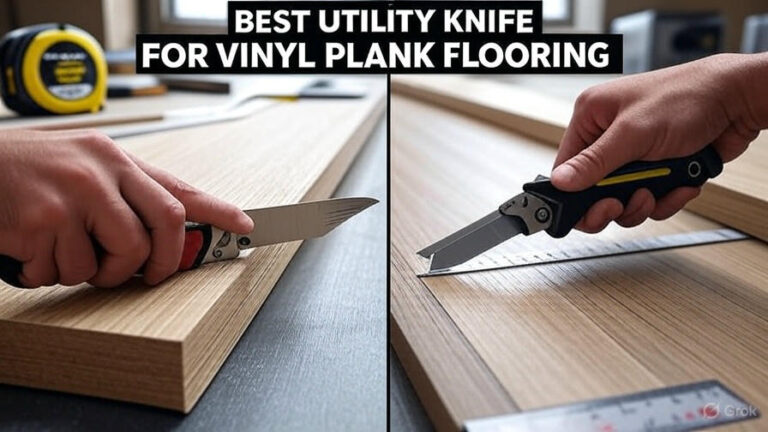Which Direction to Lay Vinyl Plank Flooring in Multiple Rooms?
When it comes to laying vinyl plank flooring in multiple rooms, one of the most important decisions you’ll make is the direction in which the planks will be laid. The direction of your flooring can greatly influence the overall look and feel of your space. Whether you are redesigning your home or installing vinyl planks for the first time, understanding how to approach this task will ensure your rooms look more spacious, cohesive, and visually appealing.
In this article, we’ll break down the key factors to consider when deciding which direction to lay vinyl plank flooring in multiple rooms. From room size to natural light flow and overall design, we’ll guide you through the process of making the best decision for your space.
Factors to Consider When Deciding on Vinyl Plank Flooring Direction
Choosing the right direction for your vinyl plank flooring is not a one-size-fits-all approach. Several factors influence this decision, including room size, the natural light flow, traffic patterns, and how the flooring will transition between rooms. Here are the primary elements to keep in mind:
Room Shape and Size
The shape and size of each room are the starting points when deciding the direction of the vinyl plank flooring. Larger rooms and long, narrow spaces tend to benefit from planks that run parallel to the longest wall. This design creates the illusion of more space, making the room feel open and airy.
For smaller or square rooms, however, you may want to experiment with laying the planks diagonally. This creates visual interest and can help make the room feel more expansive. The diagonal direction also works well in areas where you want to create a more dynamic and unique layout.
Traffic Flow and Functional Use of the Room
Another factor that affects the direction of vinyl plank flooring is how the space will be used and how traffic will flow. In high-traffic areas like living rooms or hallways, it’s best to lay the planks parallel to the room’s longest dimension. This helps create a natural path and makes the flooring easier to walk on.
On the other hand, in rooms that are less frequently used, such as bedrooms or dining rooms, you have more flexibility to experiment with the direction of the planks. Consider running the planks in a direction that complements the layout of the room and makes the best use of the space.
Aligning Flooring with the Light Source
Light plays a huge role in the visual appeal of any room. Natural light can change the perception of a space, so it’s important to consider where your light sources are coming from when determining the direction to lay vinyl plank flooring in multiple rooms.
If possible, run the planks in the same direction as the primary light source. This will allow the natural light to highlight the texture and color of the planks. In rooms with large windows, positioning the planks so they flow with the light can enhance the brightness and overall ambiance of the space.
Room-to-Room Continuity
When you are laying vinyl planks in multiple rooms, creating a seamless transition between spaces is essential. If your rooms are connected by doorways or wide openings, it’s best to align the planks in the same direction to maintain continuity. This visual flow makes the entire area feel more unified and spacious, as there are no breaks or disruptions in the layout.
However, if you want to draw a distinct line between different rooms, running the flooring in opposite directions can emphasize the transition between spaces. This approach works particularly well when you are using different materials or colors for the flooring in each room.
How to Handle Entryways and Hallways
Entryways and hallways often present unique challenges when installing vinyl plank flooring. These areas are typically narrow, which means you’ll want to be strategic with the direction of the planks to avoid making the space feel cramped.
For entryways, consider running the planks perpendicular to the direction of the door. This arrangement will highlight the entryway and create a welcoming flow into the rest of the home. In hallways, the planks should run along the length of the hallway, creating a longer and more expansive look.
Large Open Spaces vs. Smaller Rooms
In large open spaces like a living room or a great room, you have more flexibility in how to arrange the flooring. It’s usually best to run the planks parallel to the longest wall in the room to create a cohesive look that spans the entire space.
In smaller rooms, such as bathrooms or closets, it’s often better to run the planks perpendicular to the longest wall to visually expand the room. This simple adjustment can make a cramped space feel larger and more open, adding a sense of balance and proportion to the layout.
Different Styles and Patterns for Vinyl Plank Flooring
One way to add interest and uniqueness to your floor layout is by experimenting with different installation styles. While the traditional method is to lay the planks parallel to the longest wall, you can create a more striking design with a diagonal layout or a herringbone pattern. These styles are particularly effective in spaces where you want to highlight certain features or create a more artistic and bold statement.
A diagonal layout works well in large, open spaces, as it adds visual intrigue without overwhelming the room. However, it may require more cutting and a bit more time to install, so it’s important to weigh the aesthetic benefits against the labor involved.
Herringbone Pattern
A herringbone pattern is a classic flooring design that uses rectangular planks arranged in a zigzag fashion. This installation style is often used in areas where you want to draw attention to the flooring, such as in a statement hallway or as a feature wall. It works best in larger rooms to prevent the design from feeling too busy in a confined space.
Installation Tips for Vinyl Plank Flooring in Multiple Rooms
Once you’ve decided on the direction to lay vinyl plank flooring, it’s important to follow proper installation techniques to ensure a smooth and long-lasting result.
Start in the Most Visible Area
Begin laying the planks in the most visible area of each room. This is typically the area you will see first when entering the room. Starting in the most noticeable part of the room will help ensure a balanced look, especially if you have wide open spaces that need to be visually aligned.
Leave Expansion Gaps
Vinyl plank flooring expands and contracts with temperature changes, so always leave a small gap—usually around 1/4 inch—between the planks and the walls. This allows for proper expansion and prevents buckling or warping in the future.
Stagger the Planks
To create a more natural look, stagger the joints of the planks as you install them. This pattern helps to avoid visible seams and makes the flooring appear more authentic. When you finish a row of planks, start the next row with a plank of a different length to ensure the pattern stays irregular.
Conclusion
Choosing the right direction to lay vinyl plank flooring in multiple rooms is a crucial step in ensuring your space looks its best. By considering factors like room shape, traffic flow, light sources, and how the flooring will transition between rooms, you can make an informed decision that enhances the beauty and functionality of your home. With the right layout, vinyl plank flooring can transform your home into a seamless, cohesive space that feels spacious and inviting.
By paying attention to these key factors and following proper installation techniques, you can achieve a stunning and well-balanced floor design. Whether you prefer a simple and traditional approach or a bold, unique design, the direction of your vinyl plank flooring can significantly impact the overall look and feel of your space.




